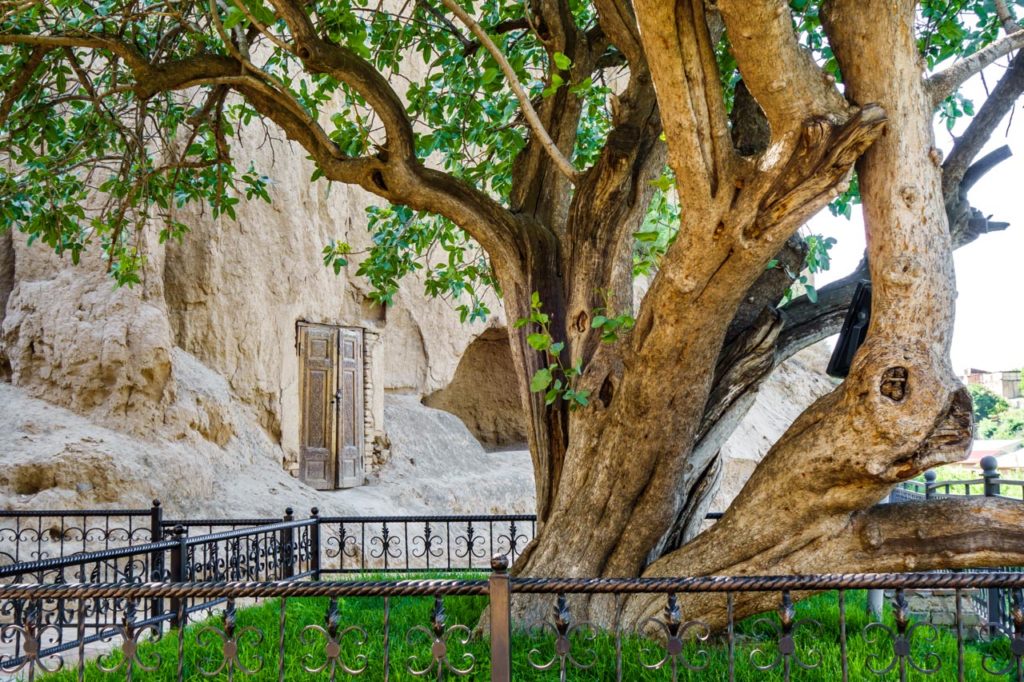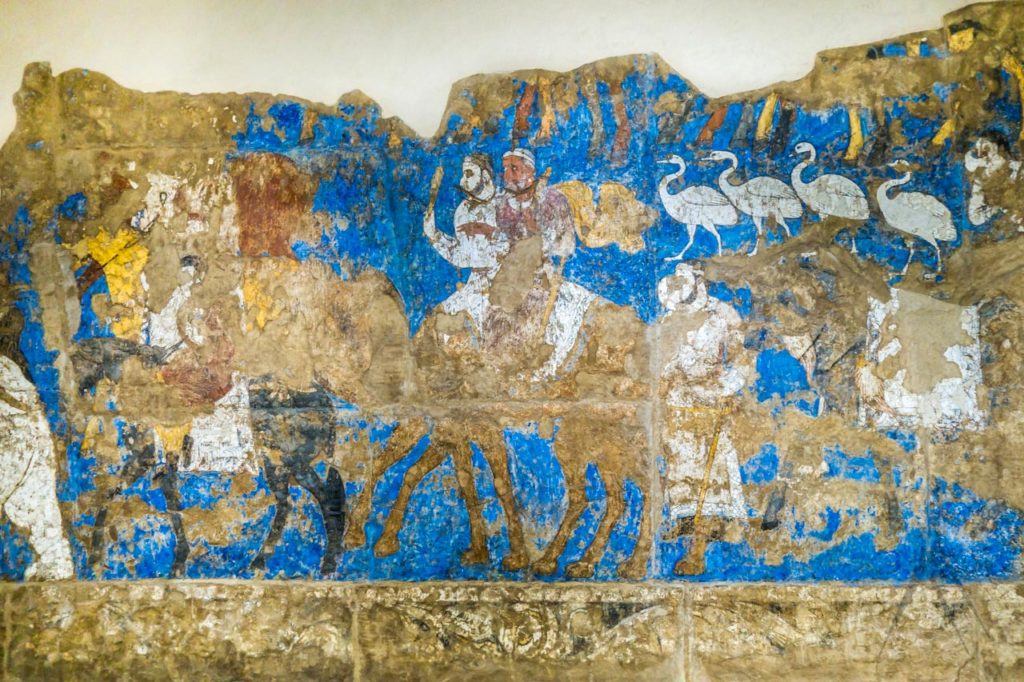Afrasiyab
Afrasiyab ancient Settlement
Samarkand‘s earliest history is closely bound with the rise and decline of the fortified city of Afrosiab. From the sixth century ВС to 1220 AD, Samarkand weathered the pattern of invasion and renewal from the hill-fort Afrosiab in the northeast of the modern city center area. The ruins cover a vast site of 120 ha and include for example a citadel with two story deep foundations.
The very old center of Samarkand is located on the Afrasiab hill, erected after the legendary Turanian king. The settlement is known to first appear in the 8th – early 7th century B.C. with an area of more than 200 ha. Through the Achaemenids period, the city was surrounded by a massive wall holding an internal hallway and towers and river cliffs on the north and east with deep valleys in the south and west protected it. Scientists identify Afrasiab with the ancient Sogdian capital of Marakanda. The whole area of the old settlement can be easily seen as it is generally higher than the surrounding area and an almost totally unbuilt area just northeast from the city center.
Sogdians were almost lost to history until Russian archaeologists began investigating the ruins in the 1880s. Their discoveries and those of later Soviet experts are gathered in a marble made museum on Afrosiab’s southeastern slopes.
Unlike many of Samarkand’s other sites, this fortified city has been excavated but not restored, therefore best to start your visit to the site with an informative Afrosiab Museum.
In the northern end of the area there is also a nice mausoleum with an ancient sacred pistachio tree for prophet Donyor (Biblical Daniel) and actually the Shah i Zinda necropolis has been dug in the southern side of this old city.

Afrasiyab Museum
The Afrosiab Museum was built around one of Samarkand’s more important archaeological finds, which is the chipped 7th-century fresco of the Sogdian King Varkhouman depicting receiving of ranks of foreign dignitaries astride ranks of elephants, camels and horses.
The museum displays a wealthy collection of Sogdian life. It contains the excavation photos and relief maps showing the city’s expansion south of the ruler’s citadel. One can see the Afrosiab’s development through the centuries along with early ceramics and architecture received an aesthetic boost from the Graeco-Bactrian period; other souvenirs of Alexander’s visit include silver coins, swords and knives. Zoroastrianism in the Kushan period is evident from altars for fire offerings, bricks with solar symbols and ornamental ossuaries for the bones of the dead, once picked clean of flesh by birds and beasts of prey. Local cults also produced terracotta statuettes of Anahita, goddess of the waters (the divinity of the Amu Darya) and of fertility (she holds a seed-packed pomegranate).
The museum holds a remarkable set of murals found in 1965. Dating from the 7th-century ad, each panel is more than 2 m high and shows scenes of the Sogdian elite at play: there are hunting scenes, a Chinese princess in a boat, and men on horseback and camel. The figures’ physical appearance and dress show the cosmopolitanism of Samarkand in this period and it is evident how it has been in trade and connection with the whole known world. In addition, the museum conducts short documentary movie in different languages.
Afrasiyab History
In the middle 6th century, ВС Sogdiana was part of the Achaemenid (Persian) empire, which existed until the 4th-century ВС, when it was destroyed by the armies of Alexander the Great. After setting down the Sogdian revolutions which hindered his campaign for some years, Alexander destroyed Marakanda. Sogdiana was restored in the time of the Seleucids. Until the first half of the 2nd century ВС, Sogdiana was part of the Graeco-Bactrian Empire. Following it entered the confederation of Kanguy princedoms.
In the first millennium AD, Samarkand became one of the strongest princedoms of Sogdiana, glorified by the achievements of the Sogdians, who organized the caravan trade on the Great Silk Road from the 4th to 8th centuries. From the 5th to 6th centuries Sogdiana officially recognized the authority of the Hephthalites, from the 6-7th centuries that of the Turkic khanate and, in the 30s of the 7th century, of the Chinese Tang dynasty.
In the middle of the 7th century, the coalition of the Sogdian country was headed by the “Ishkhid” (Governor) of Samarkand. During that period four lines of new walls were built around Samarkand as well as Zoroastrian, Buddhist, and Christian temples were constructed. Decorations in the royal palace survive to this day. In the 8th century, Arabs headed by Quteiba conquered Samarkand.
In the 9th – 10th centuries Samarkand became the first capital of the Samanid dynasty and as one of the cultural centers of the Islamic East. A majestic palace of the Samanid king was built in the western part of Afrasiab. By this time area, the inner part of the city had reached 220 hectares and there were bazaars, mosques and caravanserais in the south part. The city even had a lead made water supply system. Furthermore, the manufacturing of Chinese paper was developing and numerous workshops using water mills sprang up on the banks of the Siab.

In the 11th-13th century, Samarkand became the capital of the Western Qarakhanid state and it was newly walled with the palace of the Qarakhanids built to replace the old citadel. The tomb of Kusam ibn Abbas became a holy place where a mausoleum was built. At the beginning of the 13th century, Khorezm took Samarkand and built a new palace in place of the Qarakhanids’ but the state of the Khorezm was soon conquered by the Mongols. Chingis Khan took Samarkand after a short attack. The city suffered more due to Chinggisid internal wars in the second half of the 13th century and Afrasiab was finally abandoned.
Sights near Afrasiyab
Page updated 20.12.2021